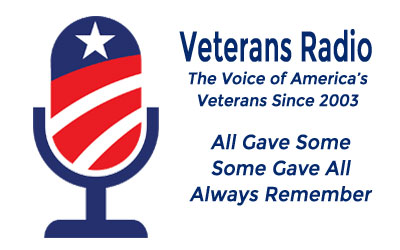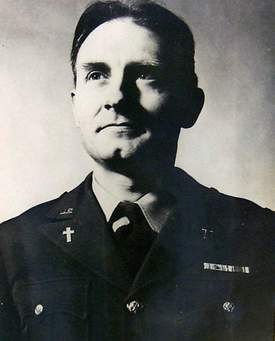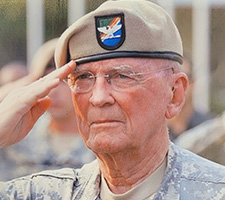
Entrepreneurs, History Project, Woodruff Foundation, Navy Pilot Stroud
Guests include:
David Woodruff – Co-Founder of Bob Woodruff Foundation
Brian Graef – Graef Family Foundation
Richard Stroud – Navy Pilot, 1944-1961
December 4, 2022

Veteran Students Pitch Business Plans at Washtenaw Community College

Veteran History Project Event
The Office of U.S. Senator Gary Peters cordially invites you to participate in a Veterans History Project event taking place on Friday, December 9th, 2022 from 10:00am to 2:00pm. RSVP’s are required.
In partnership with Eastern Michigan University, they invite all veterans and Gold Star families to join us on EMU’s campus to share their story and experience of their service to our country.
The Veterans History Project at the Library of Congress collects, preserves, and makes accessible the firsthand recollections of U.S. military veterans who served from World War I through more recent conflicts and peacekeeping missions, so that future generations may hear directly from veterans and better understand what they saw, did and felt during their service.
To RSVP for this event, please email veteranshistoryproject@peters.senate.gov or call (517) 908-0143, with your name and contact information.
Bob Woodruff Foundation
Dave Woodruff, Co-Founder and Chief Development Officer, brings us the latest in the well-recognized non-profit organization of Bob Woodruff Foundation. Dave is the brother of Bob Woodruff and has been involved with the organization since it’s inception.
How It All Began
Bob was reporting on the transfer of power between U.S. and Iraqi security forces for ABC’s “World News Tonight,” Jan. 29, 2006, when he sustained his life-threatening traumatic brain injury. Lee was on vacation with their children when she received the call — and was soon thrust into the role of caregiver. Thanks to the quick actions of brave soldiers, medics, and military medical professionals, Bob’s life was saved. Within a few days, he was brought to the Naval Hospital at Bethesda, Md.
As Bob recovered, the experience inspired their family to do one thing: Ensure that our nation’s impacted veterans, service members, and their families have access to the highest level of support and resources they deserve, for as long as they need it.
Today the Bob Woodruff Foundation complements the work of our government, ensuring that our veterans are thriving long after they return home.

Navy Pilot Stroud Thanks His “Good Co-Pilot”
Son – I’d already kissed you goodbye! The Admiral of the Task Force
Veterans Radio heard about Navy man Richard Stroud while interviewing Operation Song earlier this year. While perusing their awesome collection of works we ran across Richard Stroud’s song titled “Good Co-Pilot”. You can listen to his song here on the Operation Song website. The song was written by Steve Williams and Richard Stroud and directed by Amanda Byer.
 Dick joined the U.S. Navy at age 17 during World War II, and he continued his service through the Korean War. Dick served as a U.S. Naval Aviator with seven years active duty plus ten years of service in the U.S. Navy Reserve. Dick flew the SNJ Texan and UC-45 Expeditor (aka Twin Beech) trainers, R4D Skytrain and R6D Liftmaster transports, F6F Hellcat and F4U Corsair fighters, and TBM Avenger anti-submarine aircraft. During the time of the Korean war Lt. Stroud flew over 900,000 miles, made over 600 carrier landings, over 500 were at night.
Dick joined the U.S. Navy at age 17 during World War II, and he continued his service through the Korean War. Dick served as a U.S. Naval Aviator with seven years active duty plus ten years of service in the U.S. Navy Reserve. Dick flew the SNJ Texan and UC-45 Expeditor (aka Twin Beech) trainers, R4D Skytrain and R6D Liftmaster transports, F6F Hellcat and F4U Corsair fighters, and TBM Avenger anti-submarine aircraft. During the time of the Korean war Lt. Stroud flew over 900,000 miles, made over 600 carrier landings, over 500 were at night.
During the Korean War, 1950-1951, Russian submarines were violating the 12 mile international zone along the east coast of the US by dropping spies off and coming back later to pick them up. The FBI chose his squadron, VS-32, to intercept them and sink them. They were on patrol 24/7 for 2 years. He was in the night squadron, with over 500 landings, and one landing during Category 4 Hurricane Fox. The number of submarines they sank is still top secret.
Dick was selected to be a member of the U.S. Blue Angels – the U.S. Navy Flight Demonstration Squadron — in 1951 after the Korean War, but was released to inactive duty in August of 1951 because the Navy temporarily canceled the Blue Angels due the budget cuts by the defense department.
 Dick’s education is spread across the south from the University of South Carolina, University of Texas, Georgia Tech and Lockheed Tunnel Tech. Also, Dick was flying small aircraft at age fifteen before joining the Navy at age seventeen.
Dick’s education is spread across the south from the University of South Carolina, University of Texas, Georgia Tech and Lockheed Tunnel Tech. Also, Dick was flying small aircraft at age fifteen before joining the Navy at age seventeen.
Dick began his career at the Lockheed Georgia Company in 1952 and retired at age 88 years young in 2015 (62 years and 4 months). At Dick’s retirement party, Shan Cooper (then the Marietta site vice president and general manager) said she was willing to tear up his resignation letter because of Dick’s commitment to excellence, honor and respect – all of which had been shown and proven over and over throughout his years of service with the company.
During his career, Dick was on the engineering teams for the B-29 Superfortress bomber refurbishment program, B-47 Stratojet license production, C-130, C-141, and C-5A/B/M transports, LASA 60 utility aircraft, XB-70 subcontract team, C-27J Spartan transport, P-3 and S-3 maritime patrol aircraft, XV-6 Hummingbird research aircraft, L-1011 TriStar subcontract team, as well as the F-22 and Marietta portion of the F-35 program. He also assisted on the California-based Constellation and Electra airliner engineering teams.
Dick said that one of his proudest career highlights began in 1954, when he received from the Burbank, California plant, the prototype design drawings for the first two YC-130 Hercules. Dick converted the prototype drawings to a ‘G’ version and hand-signed each drawing which was used in the original USG proposal that resulted in the award of the first C-130 production contract. Dick proudly tells everyone his story with the final statement of: “…and we are still building the C-130 – 2,600 to date and more to come!”
Dick was senior design engineer for 10 years and was promoted to supervisor for the check group, leading 296 checkers, plus 40 secretaries who reported to him at the peak of the C-5A program which began in August, 1965. Of those 296 employees, 160 checkers and secretaries were located in Marietta, Georgia, 100 employees in London, UK, plus 76 employees working on smaller contracts and scattered between Canada and the USA.
In 1993, Lockheed Martin entered into a contract with Gulfstream, Savannah, Georgia, with requirements of redesigning the G-IV commercial jet into two new aircraft. Dick led a team of 19 engineers redesigning the G-IV commercial jet to support a Naval contract, giving birth to the Gulfstream C-20G cargo/passenger long-range aircraft. The second aircraft design resulted in the G-V Gulfstream business jet, which could fly non-stop from Tokyo to New York City.
 Richard “Dick” Stroud was born and raised in Texas, but he calls Georgia his home. Dick turned 96 years young in 2022 and he never stops. Dick is the father of 4 children, 4 step-children, 41 grandchildren, 42 great grandchildren, and 3 great great grandkids!
Richard “Dick” Stroud was born and raised in Texas, but he calls Georgia his home. Dick turned 96 years young in 2022 and he never stops. Dick is the father of 4 children, 4 step-children, 41 grandchildren, 42 great grandchildren, and 3 great great grandkids!
In his personal life, Dick was very active in Roswell Street Baptist Church as a deacon, treasurer, Sunday School teacher, and evangelism training director. He was also involved in Red Cross blood drives, Gideon Bible distribution, and was a Boy Scout commissioner.
Dick continues to inspire others with his unrelenting passion for life, his commitment to his country and his unwavering dedication – dedication to his family, his Lord, his friends, and in helping others.
To learn more about Dick Stroud, you can go to YouTube and watch the video titled, “Good Co-Pilot”.
GOOD CO-PILOT LYRICS
How do fly a Piper Cub
When you’re 15 not old enough
Speed down the runway and lift her up
Is that how you do it
How’d you join, where did you sign
To lay your life on the line
You turned 17 never looked behind
Like nothin’ to it
One day you’re South Pacific bound “Machine Gunner”
Next day you’re racing thru the clouds
Kind of makes me wonder
How do you live to be 93
Fight two wars, make it home alive in 1 piece
You say, it started with a dream
‘Bout a plane with silver wings
And 18 months of learning how to fly it
Awe but, anyway the wind blows
You gotta have a good Co-Pilot
How’d you land that Navy plane
On a Carrier in a Hurricane
40 foot waves, that’s insane
But man, you did it
CH: How do you live to be 93
Fight 2 wars and make it home alive in 1 piece
All the hoops that you’ve jumped through
More than just a time or two
Without him you wouldn’t have survived it
I guess, anyway the wind blows
You gotta have a good Co-Pilot
When they wave you off the last 6 times
But, you’re lucky 7
9 cables down and you hit #9
Thank God in Heaven
How do you live to be 93
Fight 2 wars and make it home alive in 1 piece
You say you had a helping hand
But, your plane only seats one man
You just smile and point a little higher
And say, anyway the wind blows
You gotta have a good Co-Pilot







